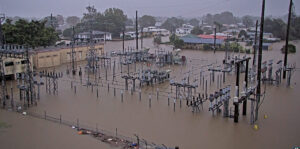‘Who’s using the hot water?!” You can often hear that shout from someone trying to have a shower while someone else in the house is trying to do the dishes. The reason is simple; most houses don’t install multiple hot water systems to ensure that everyone in the house can simultaneously use as much hot water as they want. It is of course possible to design a house’s plumbing to ensure ever-present hot water, it’s just that it would be quite expensive. Most families, conscious as they claim to be about the cost of living, seem happy to suffer the odd inconvenience in exchange for cheaper homes and cheaper electricity bills. But the exact opposite is, we are told, the case when it comes to designing our electricity grid. Indeed, we learnt this week that we spent $11 billion installing electricity poles and wires that are only used 100 hours a year. That’s less than two hours per week. The ”problem” is that on really hot days everyone with an air conditioner wants to use it at the same time. Similarly, those who can afford a swimming pool are probably lounging in it, with the pool filter running. While we don’t build public hospitals that can cope with peak demand in winter and we don’t build public transport systems that can cope with peak loads in the morning it seems unchallengeable that we must build an electricity distribution grid that can cope with peak demand. Why the difference in approach?
Related documents
Between the Lines Newsletter
The biggest stories and the best analysis from the team at the Australia Institute, delivered to your inbox every fortnight.
You might also like
Should Australia ban fossil fuel advertising?
A tobacco-style ban on fossil fuel advertising would be a decisive win for Australia – and the climate.
Fossil fuel subsidies
When governments subsidise fossil fuels—coal, gas, diesel, petrol—they not only waste public money, they also make climate change worse. Subsidies and tax breaks make fossil fuels cheaper, making it harder to switch to renewable energy and cleaner technologies. Ending fossil fuel subsidies is common sense and good policy.
Climate crisis escalates cost-of-living pressures
A new report has found direct connections between the climate crisis and rising cost-of-living pressures. Failure to lower emissions now will only aggravate the crisis, with each moment of inaction compounding the pressure on households.



